Chengdu Jinsha Site Museum is located in Qingyang District, Chengdu City, Sichuan Province, and is a national 4A-level tourist attraction. As an archaeological museum dedicated to the protection, research, and exhibition of Jinsha Culture and the ancient Shu Civilization, it covers an area of 300,000 square meters, with a total construction area of approximately 40,000 square meters. The scenic area features precious cultural relics such as gold artifacts, jade articles, and ivory unearthed from the site as its core highlights. It fully presents the urban landscape of the ancient Shu Kingdom from the 12th century BC to the 7th century BC, and is an important witness to the ancient civilization center in the upper reaches of the Yangtze River.
Historical and Cultural Background
The Jinsha Site is the first major archaeological discovery in China in the 21st century and was named one of the "Top 10 National Archaeological Discoveries of 2001". It is now a national key cultural relic protection unit and one of the first national archaeological site parks. The site dates back approximately 3,200 to 2,600 years and is highly likely to be another political, economic, and cultural center that emerged on the Chengdu Plain after the decline of the Sanxingdui Civilization. Together with Sanxingdui, it has been included in the Preparatory List of Chinese World Cultural Heritage.
Important relics such as large-scale building foundations, sacrificial areas, residential sites, and cemeteries have been discovered at the site. The unearthed cultural relics include gold artifacts, bronze ware, jade articles, and ivory objects. Among them, the tons of ivory and thousands of wild boar tusks and deer antlers are particularly stunning. It is one of the sites in the world with the richest unearthed gold and jade artifacts and the densest concentration of ivory.
The main period of Jinsha Culture spans from the late Shang Dynasty to the Western Zhou Dynasty. Together with the prehistoric city cluster on the Chengdu Plain, the Sanxingdui Site, and the Warring States Period ship-coffin tombs, it forms the four developmental stages of the ancient Shu Civilization. This proves that the Chengdu Plain is the origin center of civilization in the upper reaches of the Yangtze River and provides key evidence for the "pluralistic integration" theory of the origin of Chinese civilization.
Major Scenic Spots
Relic Hall
The Relic Hall is the excavation site of large-scale sacrificial activities at the Jinsha Site and is the most complete and longest-lasting sacrificial relic preserved in China. Supported by 15 steel columns, the exhibition hall retains 90% of the unearthed cultural relic areas that have not yet been excavated. Visitors can directly view the sacrificial scenes of the ancient Shu Kingdom and experience the religious atmosphere of 3,000 years ago.
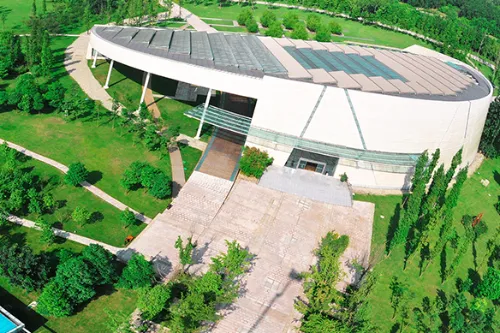
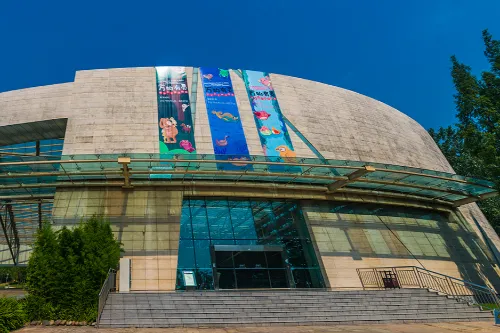
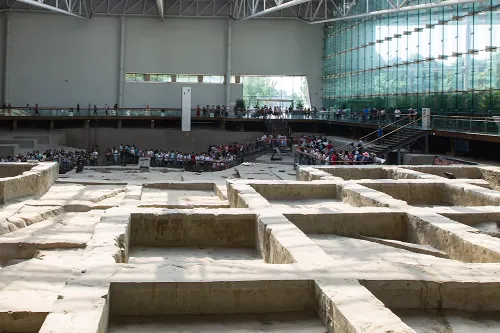
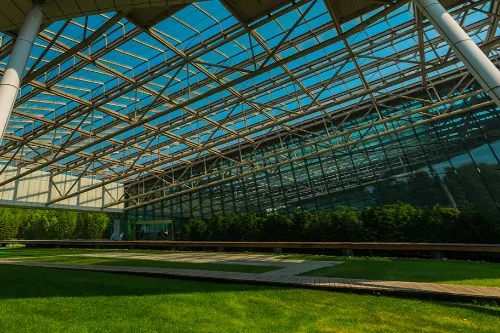
Exhibition Hall
The Exhibition Hall is divided into 5 exhibition areas: - "Ancient Homeland" uses modern technology to restore the ecological environment of 3,000 years ago; - "Silhouette of the Royal Capital" showcases the agricultural life and class differentiation of the ancient Shu people; - "Eternal Heaven and Earth" recreates the mysterious sacrificial rituals; - "Treasures of a Thousand Years" displays the museum's most precious artifacts, including the Sun God Bird Gold Ornament, the Gold Mask, and the Ten-Section Jade Cong; - "Interpreting Jinsha" sorts out the developmental context of the ancient Shu Civilization and fully presents the historical value of Jinsha Culture.
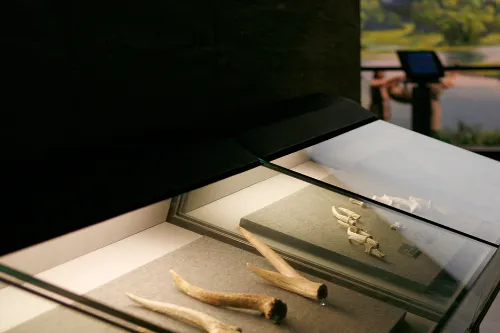
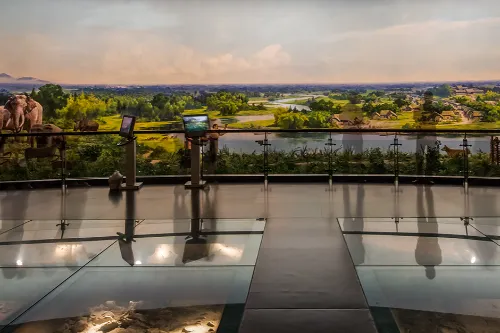
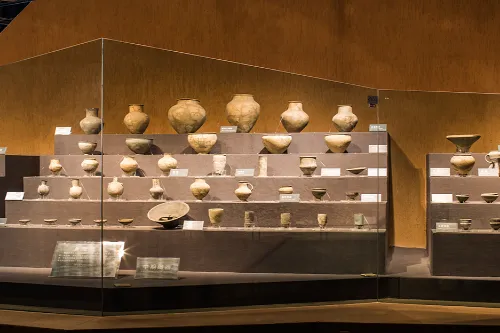
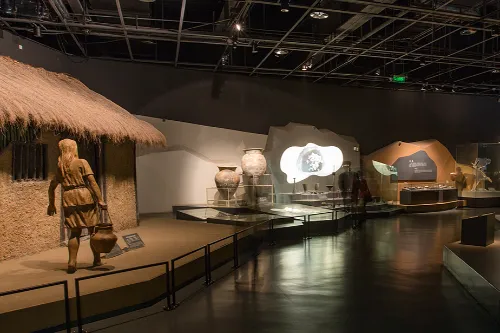
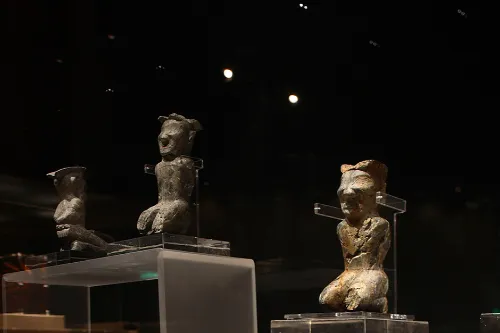

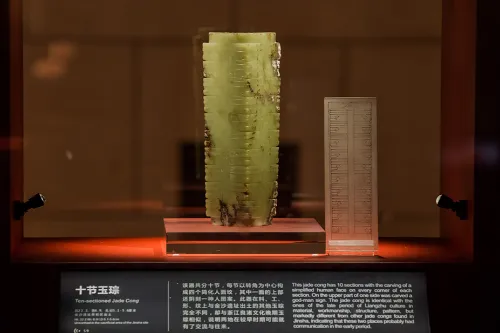
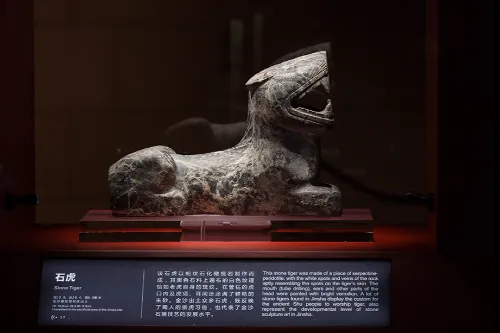
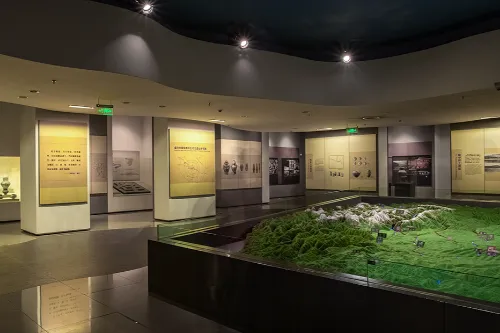
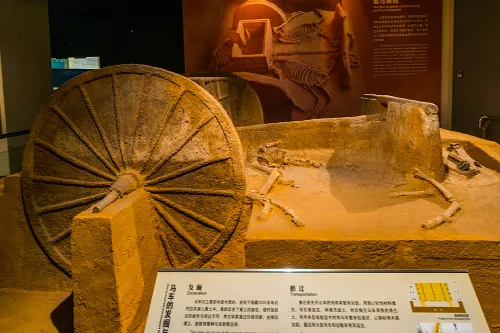
Ebony Forest
Located at the southeast corner of the museum, the Ebony Forest is composed of more than 60 ebony logs unearthed from the Jinsha Site and the Chengdu area. These ebony logs, which have undergone carbonization for thousands of years, have witnessed the ecological changes in the ancient Shu region and are a landscape with both scientific and artistic value.
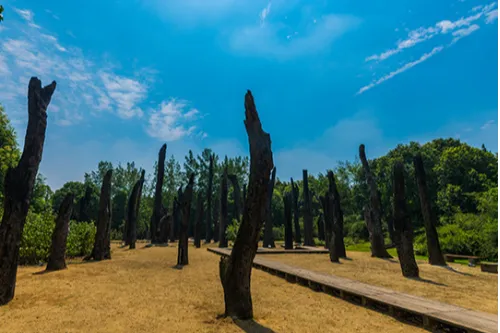
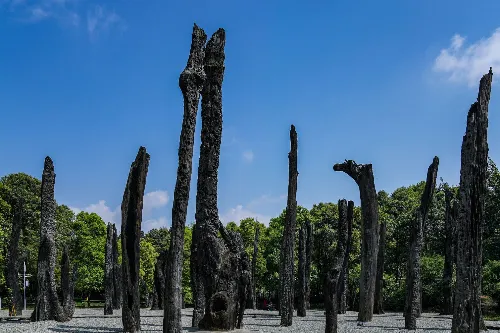
Jinsha Deer Garden
Jinsha Deer Garden is a popular spot for parent-child interaction. Here, visitors can have close contact with sika deer, learn about the symbolic significance of deer in ancient Shu culture, and experience the harmonious coexistence between humans and nature.
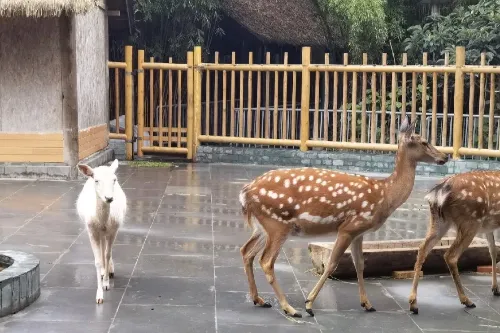
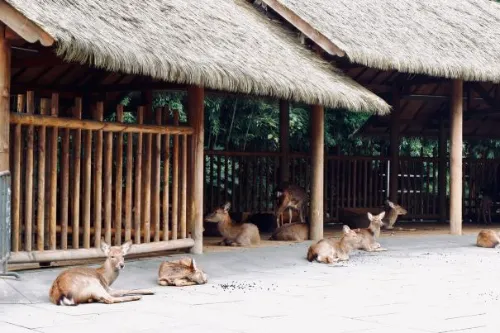
Jade Road
More than 2,000 jade artifacts have been unearthed from the Jinsha Site, with a large quantity and a rich variety. Covering an area of approximately 1,000 square meters, the Jade Road is composed of large jade stones and several small pebbles, and is a favorite paradise for children.
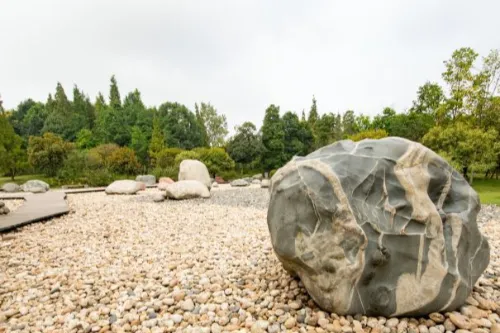
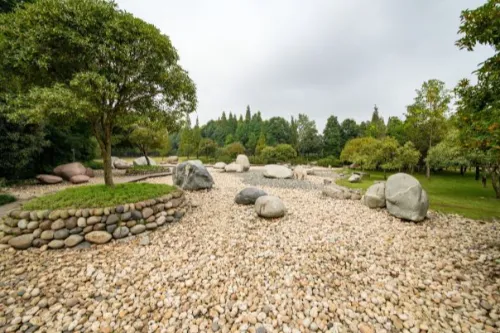
Recommended Tour Route
Recommended Route: Main Entrance → Relic Hall (visit the ancient Shu sacrificial relics) → Exhibition Hall (learn about cultural relics in the order of "Ancient Homeland → Silhouette of the Royal Capital → Eternal Heaven and Earth → Treasures of a Thousand Years → Interpreting Jinsha") → Ebony Forest (admire the thousand-year-old ebony landscape) → Jinsha Deer Garden (parent-child interaction) → Exit. The entire journey takes approximately 2.5 hours, allowing visitors to systematically experience the historical context and archaeological charm of Jinsha Culture.
Travel Tips
- Recommended visiting time: Spring and autumn (March-May, September-November), when the climate is mild and suitable for outdoor visits.
- Reserve tickets in advance through the official WeChat public account "Chengdu Jinsha Site Museum" to avoid queuing during holidays.
- Rent an audio guide (20 yuan per unit) or hire a interpreter (100 yuan per session) to gain an in-depth understanding of the historical stories behind the cultural relics.
- Bring valid documents such as an ID card to enjoy preferential policies; parent-child visitors can give priority to visiting Jinsha Deer Garden and reserve 30 minutes for interaction.
- After the visit, you can go to nearby Chen Mapo Tofu or Shujiuxiang Hot Pot to taste Sichuan cuisine and experience in-depth travel combining "food + culture".
Notes
- Smoking and touching cultural relics are prohibited in the museum; do not use flash when taking photos (especially in the Exhibition Hall).
- The floor of the Relic Hall is a glass plank road; it is recommended to wear non-slip shoes and avoid running or pushing.
- Feeding self-prepared food to deer is prohibited in Jinsha Deer Garden; you must use the feed provided by the scenic area (10 yuan per portion).
- There are many tourists during holidays; it is recommended to visit during off-peak hours (9:00-11:00 a.m. has fewer people) and keep your personal belongings safe.
- During the epidemic period, you must comply with the scenic area's epidemic prevention requirements (such as wearing a mask, showing a health code, etc.); please refer to the daily announcement for specific details.
Transportation
- Bus: Take Bus No. 7, 82, 83, 100, 105, 123, 147, 212, 339, G58, etc., and get off at "Jinsha Site Museum Station" to reach the destination directly.
- Metro: Take Metro Line 7 to "Jinsha Museum Station", exit from Exit C, and walk for about 5 minutes to arrive.
- Self-driving: The museum has an underground parking lot located at No. 227 Qingyang Avenue, with a parking fee of approximately 10 yuan per hour.
Opening Hours
Open from Tuesday to Sunday, 9:00-18:00 (admission stops at 17:30); closed on Mondays (except legal holidays). In case of major events or special circumstances, the opening hours may be adjusted; please refer to the official announcement of the scenic area for details.
Tickets
The ticket price is 70 yuan per person.
You can search for the official WeChat public account of the scenic area "金沙遗址博物馆" to get the latest updates or purchase
Online Booking
Click here to jump to the Trip.com ticketing platform for ticket purchase.


